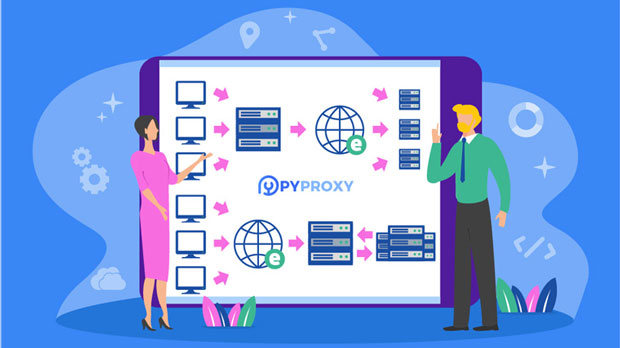Web scraping is a crucial tool for businesses and developers seeking to extract valuable data from websites for research, competitive analysis, and more. However, web scraping is often met with obstacles such as IP blocking, rate-limiting, and CAPTCHAs, which can significantly reduce the success rate of scraping efforts. By combining APIs and proxies, users can bypass these challenges, ensuring more reliable and consistent data extraction. In this article, we will explore how to effectively integrate APIs and proxies to enhance the success rate of web scraping, providing practical strategies and in-depth insights for improving efficiency and avoiding common pitfalls. Understanding the Importance of Web ScrapingWeb scraping involves extracting information from websites by automatically collecting data through programmed scripts. This data can be used for a variety of purposes, such as price comparison, trend analysis, and market research. The ability to scrape websites efficiently is critical, but there are many factors that can hinder successful scraping, such as the website’s security mechanisms, anti-bot systems, and traffic limits. By understanding these challenges and employing the right solutions, businesses can unlock valuable insights while minimizing the risk of disruptions.Challenges in Web ScrapingSeveral challenges can arise when attempting to scrape data from websites. Some of the most common ones include:1. IP Blocking: Websites often detect and block IP addresses that send too many requests within a short time frame.2. Rate-Limiting: Many websites limit the number of requests that can be made in a given period to prevent overload or abuse.3. CAPTCHA Systems: CAPTCHA challenges are used to verify whether a request is coming from a human or a bot.4. Geo-Restrictions: Some websites only allow users from specific regions to access their content.5. Session Management: Websites may require users to maintain consistent sessions or logins to access certain data.These challenges can significantly reduce the effectiveness of web scraping, making it crucial for users to adopt strategies to bypass these roadblocks.Role of APIs in Web ScrapingAPIs (Application Programming Interfaces) are essential tools for accessing and interacting with online services. Many websites offer public APIs that allow users to fetch structured data directly from their servers, thus avoiding the need for web scraping. APIs generally offer several advantages over traditional scraping techniques, including:1. Structured Data Access: APIs provide data in a more organized format, typically JSON or XML, making it easier to process.2. Reduced Risk of Blocking: Since APIs are designed to handle requests, they often come with higher request limits and reduced chances of being flagged as suspicious activity.3. Reliability and Speed: APIs are optimized for high-speed data access, reducing the likelihood of encountering issues like rate-limiting or CAPTCHA challenges.4. Efficiency: By using APIs, users can quickly access the specific data they need without having to navigate through an entire webpage.However, not all websites provide APIs, and some may restrict access to their API endpoints. This is where proxies come into play, offering an additional layer of protection and flexibility for users engaging in web scraping.Using Proxies to Overcome Web Scraping ObstaclesProxies serve as intermediaries between a user’s computer and the website they wish to access. By using proxies, users can mask their real IP addresses, thus preventing websites from detecting and blocking them based on their IP. Proxies can help overcome several common web scraping challenges, including:1. Avoiding IP Blocking: By rotating IP addresses with proxies, users can bypass IP blocking and continue scraping without interruptions.2. Circumventing Rate-Limits: Proxies allow users to distribute requests across multiple IPs, reducing the likelihood of triggering rate-limits set by websites.3. Bypassing Geo-Restrictions: Proxies can be used to simulate browsing from different regions, granting access to geo-restricted content.4. Handling CAPTCHA Challenges: Although proxies alone may not bypass CAPTCHA systems, they help distribute the requests, making it less likely that a CAPTCHA challenge will trigger for every request.Types of Proxies for Web ScrapingWhen choosing proxies for web scraping, users must consider different types of proxies, each offering unique benefits:1. residential proxies: These proxies use IP addresses assigned to real devices by ISPs, making them appear as legitimate users. They are highly effective for avoiding detection and are typically harder for websites to block. However, residential proxies tend to be more expensive.2. datacenter proxies: These proxies come from data centers and are not linked to real devices, which makes them easier to detect. However, they are faster and more cost-effective, making them ideal for scraping large volumes of data when high anonymity is not essential.3. rotating proxies: Rotating proxies automatically change the IP address used for each request, providing a continuous stream of new IPs for scraping tasks. This method minimizes the risk of being blocked.4. Dedicated Proxies: These proxies are assigned to a single user, ensuring exclusivity. They offer higher performance and are useful when specific scraping tasks require stable IP addresses.5. Shared Proxies: These proxies are shared among multiple users, which can make them less reliable and slower but are more affordable.Choosing the right type of proxy depends on the specific needs of the user, including the volume of data being scraped, the need for anonymity, and the type of website being targeted.Combining APIs and Proxies for Optimal Scraping ResultsTo maximize the success rate of web scraping, combining APIs and proxies is a highly effective strategy. Here are several ways to integrate them:1. Use APIs When Available: Start by using APIs wherever possible. This will ensure structured and reliable data access while avoiding the complexities of scraping. Most websites offer APIs with higher rate limits and fewer security measures, making them the preferred choice for data extraction.2. Leverage Proxies for Non-API Sites: For websites that do not offer APIs, or when API access is limited, proxies can be used to mask IP addresses and distribute requests across multiple IPs, ensuring smooth scraping operations.3. Rotate Proxies for Large-Scale Scraping: When scraping large amounts of data, rotating proxies are essential to ensure continuous access without triggering security mechanisms like rate-limiting or IP blocking.4. Combine APIs and Proxies for Enhanced Security: In cases where APIs are rate-limited or blocked, using proxies alongside APIs can help bypass restrictions and improve the reliability of the scraping process.Best Practices for Improving Web Scraping SuccessTo further improve the success rate of web scraping, consider the following best practices:1. Respect Website Policies: Always check the website’s terms of service and robots.txt file to ensure that scraping is permitted.2. Throttle Requests: Avoid overwhelming websites by spacing out requests and simulating human-like browsing patterns.3. Monitor Proxy Health: Regularly check the health of your proxies to ensure they are functioning correctly and not blacklisted.4. Use Captcha Solvers: If CAPTCHA challenges are encountered, consider using third-party CAPTCHA-solving services to improve efficiency.5. Ensure Data Quality: Always clean and verify scraped data to ensure it is accurate and relevant.Combining APIs and proxies is an essential strategy for improving the success rate of web scraping. By using APIs where available, and proxies to bypass security mechanisms, users can ensure consistent and reliable data extraction. With the right approach and tools, web scraping can become a powerful asset for businesses looking to gather data and insights from the web while minimizing the risk of being blocked or limited.
Apr 10, 2025
![arrow]()




























































